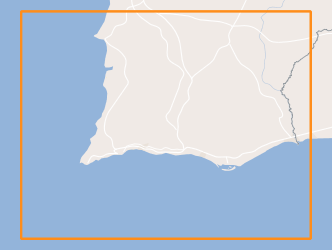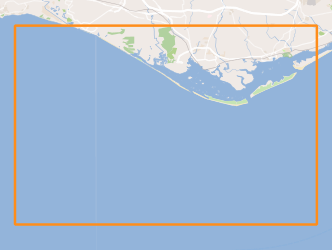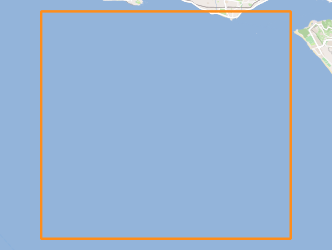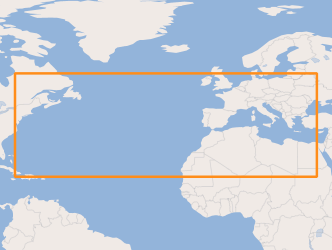Creation year
2015
85 record(s)
Type of resources
Available actions
INSPIRE themes
Provided by
Years
Formats
Representation types
Update frequencies
Status
Service types
Scale
Resolution
geoDescCode
cartografia
geographicCoverage
geographicCoverageDesc
inspirecore
hvd
referenceDateRange
denominatorRange
resolutionRange
dataPolicy
openServiceType
dataType
dataFormat
-
Cuidados de Saúde (Serviços de Saúde, Farmácias/Postos de medicamentos e Estabelecimentos de venda de medicamentos não sujeitos a receita médica dos Açores) existentes na Região Autónoma dos Açores
-

Within Portugal's National Biological Sampling Project (PNAB) a set of activities are conducted in the collection, management and use of biological data, collected from the registered commercial fleet in mainland Portugal (fisheries-dependent data) and several research surveys (independent fisheries data). These activities allow the assessment of the state of fishery resources, population structure, distribution and abundance of resources, diversity and dynamics of biological communities associated with the fishery resources and biological studies (growth, reproduction).The crustaceans campaigns are usually held in June/July with the ship “Noruega” and cover the extension of the Portuguese coast of Alentejo and Algarve.
-

A campanha sísmica ASTARTE 2014 tem como objetivo estender a área de levantamentos sísmicos anteriores até a uma distância de cerca de 20 milhas náuticas a partir da costa até a borda da plataforma continental. O planeamento da campanha contempla a aquisição de 24 perfis divididos em duas classes: uma classe em linha perpendicular à costa e uma classe em linha cruzada ortogonal às anteriores. A principal razão para selecionar a região ao largo da Quarteira é porque esta região é um alvo de registos de tsunamis na plataforma continental, embora toda a costa do Algarve possa ser um repositório de registros geológicos de tsunamis passados.
-
Cuidados de Saúde (Serviços de Saúde, Farmácias/Postos de medicamentos e Estabelecimentos de venda de medicamentos não sujeitos a receita médica dos Açores) existentes na Região Autónoma dos Açores
-

The Tagusdelta campaign had technical and scientific objectives. The main technical objective was to make the proof of concept of the new proposed method for the acquisition of 3D very high resolution seismic reflection data. The accomplishment of this objective included: deployment and data acquisition systems tests; positioning uncertainty assessment; seismic and positioning data processing for the 3D seismic volume generation. From the scientific point of view the main objective was to acquire very high resolution seismic reflection data that allow the characterization of the frontal area of the Tagus ebb-tide delta seismic stratigraphic facies arquitecture. A special focus was placed in the: identification, characterization and mapping of mass wasting features, in order to allow a first trial of the Pleisto-Holocene mapping and chronostratigraphy of these features in the Tagus delta; imaging the morphologies of landslide structures with 3D seismic, particularly in what concerns the landslide already identified with the previous data, to allow the quantification and precise location of the events, to generate data of unprecedented realism that can be fed into the tsunamigenic mathematical models.
-
Casas de Saúde, foram georeferenciados com base em Ortofotomapas à escala 1:5000, números de Policia e Troços, fornecidos pela DSCIG e num PDF fornecido pelo Serviço Regional de Saúde dos Açores. Contém informação do nome do estabelecimento, morada, e-mail, telefone, fax e endereço de site.
-

Digital archive of the analyzes of the surface charts of 00 UTC and 12 UTC, held in IM and IPMA Weather Forecast Center since October 2015. In the surface analysis charts, the isobars are filled up every 5 hPa, the high pressure centers (A) and the low pressure centers (B). Frontal surfaces, crest lines, valley lines, lines of instability and convergence are represented according to the standards established by the WMO. This compilation is in digital format (pdf) with a total of 1094 charts.
-
Cartografia Topográfica Vetorial 1:2 000 para o Plano de Pormenor das Águias e Eucaliptal - Alpiarça
PP Águias e Eucaliptal. Escala 1:2000. Formato vectorial. Duas áreas com a dimensão total aproximada de 24ha.
-

The TOPOMED-FREEZE campaign was organized as a joint campaign of the TOPOMED and FREEZE projects sponsored by the Fundação para a Ciência e a Tecnologia (FCT) (Plate reorganization in the western Mediterranean: lithospheric causes and topographic consequences, TOPOEUROPE/0001/2007; Submarine FREshwater dischargEs: characteriZation and Evaluation study on their impact on the Algarve coastal ecosystems, PTDC/MAR/102030/2008). These two projects share complementary study areas and objectives. The first concentrates on the effects of neotectonics on the evolution of landscape and environments and the second on the investigation of Submarine Fresh-Water Discharges.
-
Cartografia topográfica em formato vetorial à escala 1:1000 da da área de Reabilitação Urbana do Núcleo Central da cidade da Trofa, obtida por restituição da fotografia aérea, do voo efetuado com câmara fotogramétrica digital, no ano de 2015, no dia 15 de Maio.
